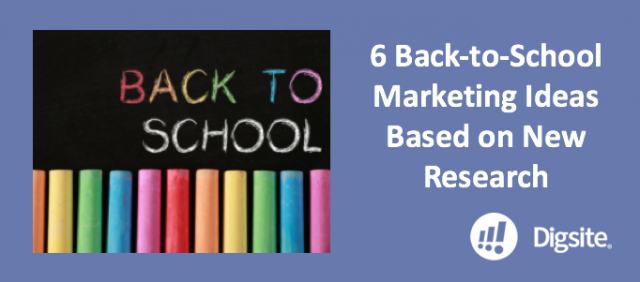
As kids settle into their school routine, retailers are reviewing their results from the back-to-school season. It’s a good time to consider how these six research-based back-to-school marketing ideas can help you improve next year’s approach.
There is a collective sigh of relief from retailers and parents for having survived another busy back-to-school season. But even though this one is in the books, the holiday season is looming, as well as next year’s back-to-school planning.
To improve your performance, you need to understand the ideal shopping experience, and the only people who can define that for you are the shoppers themselves. However, the answer won’t just come through quantitative surveys. You need qualitative research methodology to dig deeper.
When Numbers Don’t Tell the Whole Story
Previous quantitative research has given us a sense of trends. For example, 49 percent of Americans have shopped online and then picked up in-store, and 75 percent of consumers won’t wait more than five minutes in queue.
But we wanted to understand what was driving those behaviors, and how retailers could learn from qualitative customer input to create an ideal customer experience.
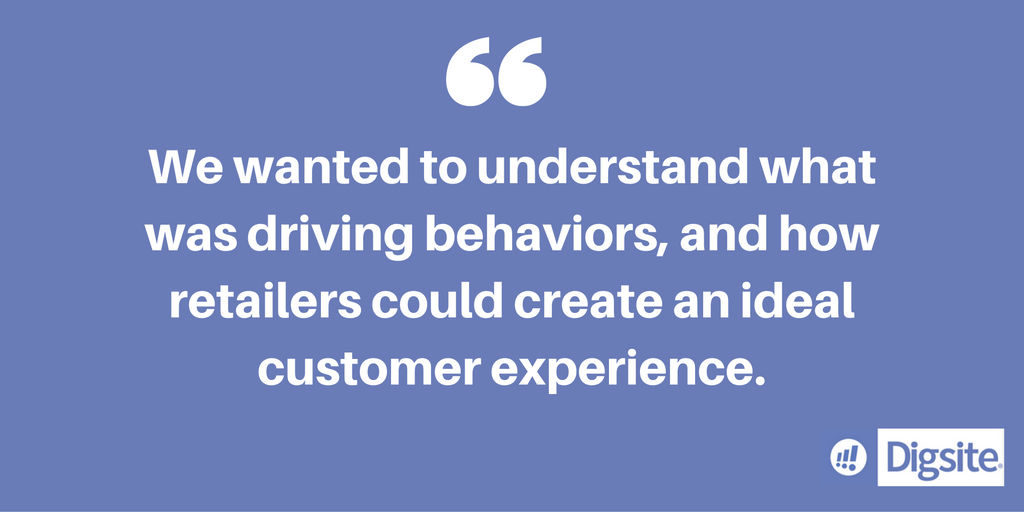
Qualitative research can uncover nuanced insights and reveal why consumers act like they do. We used Digsite Sprints to “fill in the blanks” of quantitative research and really see the big picture.
Digsite Sprints are an on-demand market research application designed to produce in-depth insights from a highly-targeted audience in a period of a week or less. After recruiting 29 parents of teens and 34 parents of tweens for the study, we used a series of activities to tap into their attitudes, interests and behaviors.
We’re going to share some of the big takeaways from the study in this post, but you can read about them all here.
Big Takeaways: What the Research Tells Us
The research project yielded a number of profound insights, but here are some big takeaways in regards to an ideal back-to-school shopping experience. Consumers are looking for:
-
A well-organized store - which means not only well-organized merchandise bins and areas, but one with a layout that makes it easy to find items in the store.
-
Assistance when they need it - either from in-store personnel or apps and other types of technology.
-
Coupons that make it worth the effort - including BOGO and loss leader promotions that really help them save.
-
Mobile apps that can help with price comparison and promotion hunting.
-
A relaxing experience, one that allows for bonding and stirs a sense of nostalgia in parents.
-
A unique, personalized shopping experience in which they don’t feel like a number.
6 Ideas to Improve the Shopper Experience
From the takeaways we’ve highlighted above (and other nuanced insights from the study), we’ve distilled six ideas / strategies to help you improve the shopper experience. We’ve also included some examples from other retailers currently using these strategies.
1. An Organized Store Includes More Than Just Signage
Time and time again, we heard from our research participants that the overall store layout was a critical part of the shopping experience. And it’s not just about have clearly marked signs hanging from the ceiling telling you where the “Boys” or “Girls” clothing department is located.
They want a layout that is stress-free, clean, and provides info. Here’s an example of an organized layout:
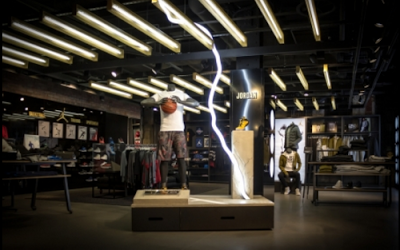
Photo courtesy of vmsd.com (http://vmsd.com/content/captivating-customers).
As you can see from this photo in a story from VMSD Magazine (@VMSDmag), the layout from Nike takes the in-store display to another level. Not only does this display use space effectively, but it integrates information to educate the consumer.
People are used to having information at their fingertips -- your display can educate in an entertaining way. It’s sleek and streamlined. Clear the clutter, and you’ll make the sale.
2. Identify Ways to Create Family Bonding
Back-to-school shopping has become a family tradition and a bonding experience. Parents and children share in the excitement of a new year, and heck, it’s fun to go shopping.
The smart retailers are producing unique ideas to capitalize on the family experience. This post from Procter & Gamble’s P&G everyday (@P&Geveryday) shares examples of how to make shopping fun for the whole family.
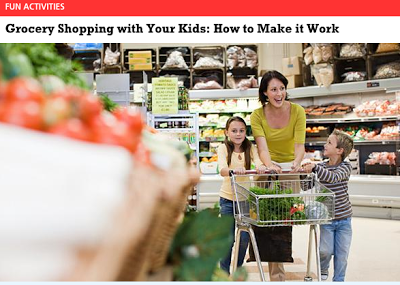
Photo courtesy of pgeveryday.com.
While the post provides general tips on how to make shopping a fun family experience, there are plenty of avenues for creativity with back-to-school shopping. You can make shopping a game, or create a photo booth to take funny family pictures.
Think Disney. It’s not just about shopping. It’s about the experience.
3. Simplify Shopping by Using Bundling, but Bundle Wisely
The easiest way to create a family bonding experience is to make the actual shopping as easy as possible. For example, many participants talked about having pre-selected packages ready for them when they arrived.
That’s a great idea, but bundle wisely. A study by the Harvard Business School showed that bundling works well, but only if customers are given the option to choose the products individually. It also works well if the consumer has the option to choose their own bundle.
Naturebox.com (@naturebox), for example, makes bundling an artform. The website features multiple healthy snack options that they bundle into a single package. They even offer to replace snacks in your bundled package if you don’t like them.
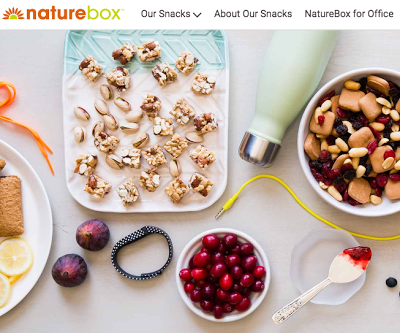
Photo courtesy of naturebox.com.
4. Build a Bowling Alley...or Find Other Ways to Entertain
We mentioned some bonding ideas earlier, but why stop with just the shopping experience? Integrate stand-alone entertainment into your venue, just like the geniuses at Bass Pro Shops (@bassproshops).
These Bass Pro shops actually have a 15,000 square-foot nautically themed bowling alley, complete with scenery and glow-in-the-dark cosmic bowling. It’s retail-tainment, and it will keep the shopper happy and shopping in YOUR store.
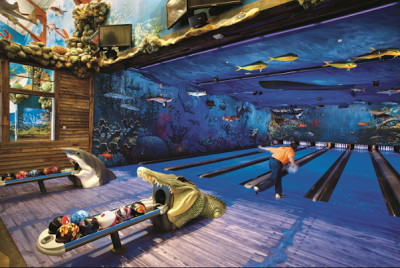
Photo courtesy of Bass Pro Shops.
Granted, not every retailer has the budget to build a bowling alley. But think about the spirit of the example. Why not put out a bean-bag toss, or set up a ping pong table? How about a karaoke machine? Make it a party, and you’ll make them happy.
5. Go High-Tech to Help Shoppers Find Items Fast
The study showed parents wanted a well-organized store so they could easily find items. Yet even the most organized stores require searching. Smart retailers are using apps to help consumers find items in-store. It’s as if you could use Google Maps to find a pack of pencils.
Target has an app, as noted in this post that appeared in The Consumerist (@theconsumerist), that allows you to create a list before arriving at the store. It then provides a store map that indicates where the items are located.

Photo courtesy of The Consumerist.
6. Use Technology for Special Interactive Offers
Retailers are not limiting innovation to location-finding. They’re using it to personalize the in-store experience. Sephora’s To Go app (@sephora), for example, uses “beacons” to send out birthday alerts to customers.
As noted in this post that appeared in Business2Community (@b2community), Sephora’s app reminds customers to “pick up a special package, which is complimentary with a purchase during their birthday month.”
They also offer special deals based where you are in the store. Shoppers near the beauty section receive a special deal for a mini-makeover, for example.
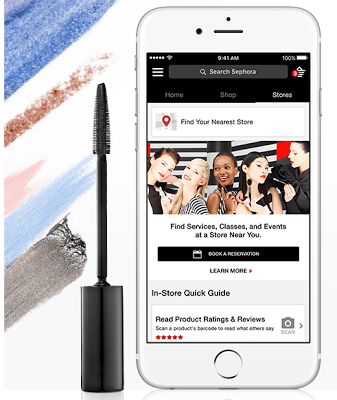
Photo courtesy of Sephora.com.
For more detail on these six strategies, watch the pre-recorded Digsite webinar “6 Ways to Create an Amazing Shopper Experience.”
The six marketing ideas we’ve presented here are actionable strategies we’ve derived from the qualitative Back-to-School Digsite research study. Now that you’ve got the framework for what parents are looking for, it’s up to you to get creative.
For more in-depth insights, download the complete report by clicking on the link below.

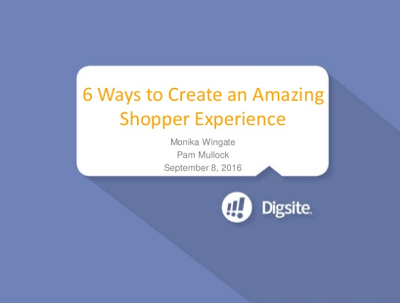
.png)


